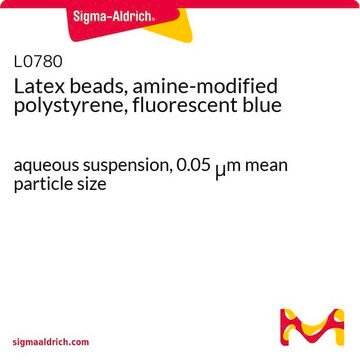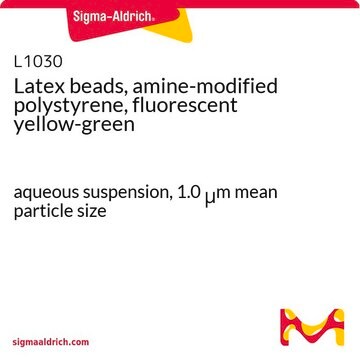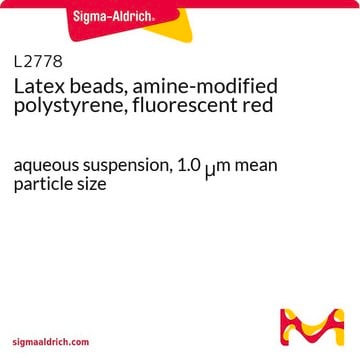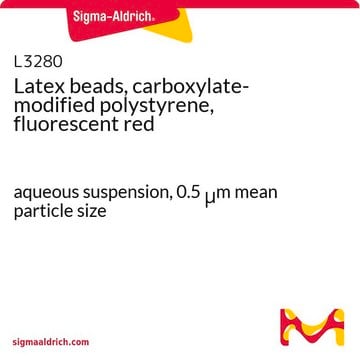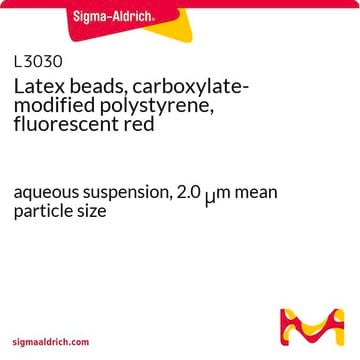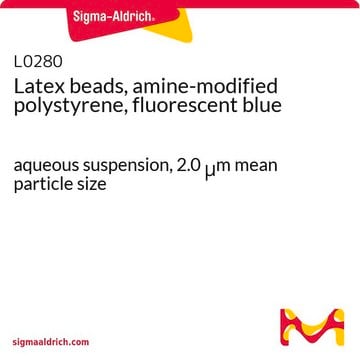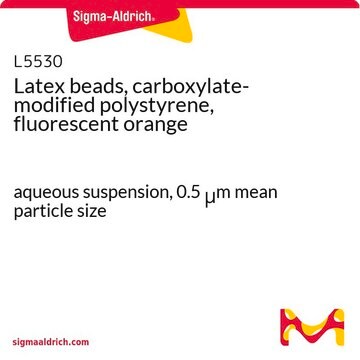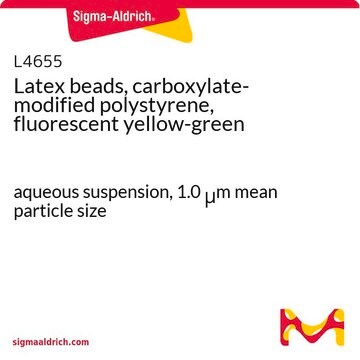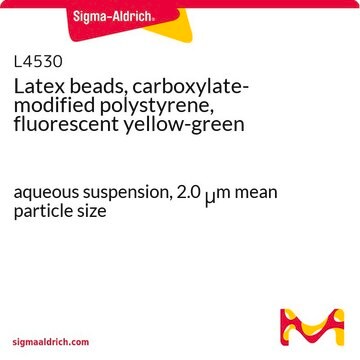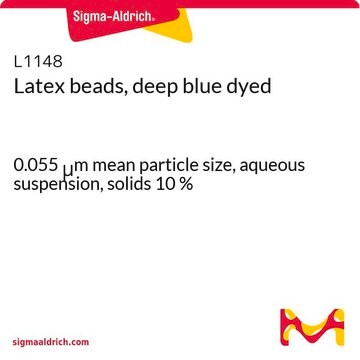Unfortunately, the molecular weight of this product is not determined.
L9904
Latex beads, amine-modified polystyrene, fluorescent orange
aqueous suspension, 0.1 μm mean particle size
Sinonimo/i:
Amine-Modified Latex Beads, Fluorescent Orange Beads
Scegli un formato
138,00 €
Scegli un formato
About This Item
138,00 €
Prodotti consigliati
Stato
aqueous suspension
Livello qualitativo
Composizione
Solids, 2.5%
tecniche
cell based assay: suitable
Dimens. media particelle
0.1 μm
Fluorescenza
λex ~475 nm; λem ~540 nm
applicazioni
cell analysis
Cerchi prodotti simili? Visita Guida al confronto tra prodotti
Applicazioni
Codice della classe di stoccaggio
10 - Combustible liquids
Classe di pericolosità dell'acqua (WGK)
WGK 3
Punto d’infiammabilità (°F)
Not applicable
Punto d’infiammabilità (°C)
Not applicable
Scegli una delle versioni più recenti:
Possiedi già questo prodotto?
I documenti relativi ai prodotti acquistati recentemente sono disponibili nell’Archivio dei documenti.
I clienti hanno visto anche
-
is it possible to know the molecoar weight to calculate the molarity of the suspension?
1 risposta-
Utile?
-
-
How did you verify the amine coating? What spectroscopy method have you used to verify the amine coating? Can you show the result that proves that the amine has been coated? (For example, if you have done FTIR, then can you show us the peaks)
1 risposta-
The amine modification of these beads is validated through an extensive series of titrations. Unfortunately, the method is considered proprietary. There is no specific documentation or data available to share.
Utile?
-
-
what is the concentration of polystyrene microplastic [mg/ml] in this product No. L9904
1 risposta-
The concentration of this aqueous suspension is 2.5% w/v or 2.5g/100 mL. This equates to 25mg per 1 mL package.
Utile?
-
Filtri attivi
Il team dei nostri ricercatori vanta grande esperienza in tutte le aree della ricerca quali Life Science, scienza dei materiali, sintesi chimica, cromatografia, discipline analitiche, ecc..
Contatta l'Assistenza Tecnica.